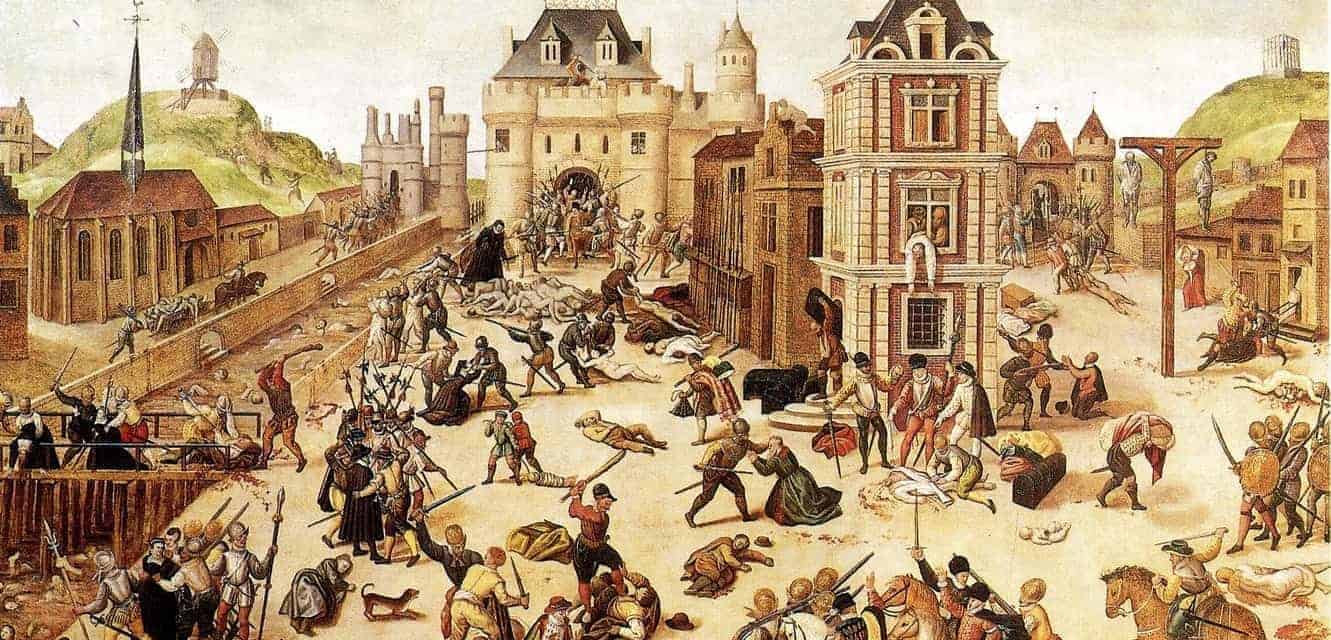On this day in history, one of the most bloody massacres in European history took place. At this time France was divided between Protestants and Catholics factions. There had been attempts to reconcile the two groups and for a period there was peace between them. They had fought three religious wars in the recent past, which has caused great loss of life. The King of France was extremely weak and he was unable to provide the country with the leadership it needed at this critical time. All over Europe Catholics and Protestants were butchering each other in great numbers, at this time.
King Charles IX of France, was ruled by his domineering mother, Catherine de Medici. She was a very cunning woman and a student of the cynical political theorist Machiavelli. Catherine orders the assassination of Huguenot Protestant leaders in Paris, and this sets off an orgy of killing that results in the massacre of many thousands of Huguenots (French Protestants) at first in Paris and then all across France.

Two days earlier, Catherine had ordered the murder of Admiral Gaspard de Coligny, a Huguenot leader. Catherine was afraid that the Admiral had too much influence over her son and this could lead to her losing power over the king. The Queen Mother was usually able to manipulate her son to do her bidding. However, the Admiral was only wounded, and the king promised to investigate the assassination in order to placate the angry Huguenots. Catherine then convinced the young king that the Huguenots were plotting to assassinate him and take his crown. A fearful Charles ordered the murder of the Huguenot leadership. Most of these Huguenots were in Paris at the time, celebrating the marriage of Henry of Navarre, their unofficial leader to the king’s sister. This was intended to reconcile the Huguenots and the Catholics but instead, it was the occasion of a bloodbath.
A list of those to be murdered was drawn up, headed by Coligny, who was brutally beaten and thrown out of his bedroom window. His death was a signal for a general massacre of Protestants. Once the killing started, mobs of Catholic Parisians, apparently overcome with bloodlust, began to massacre Protestants, many of who had been their neighbours or even friends. The Catholics killed men, women, and children and they killed their victims in the most brutal manner. The Pope praised the killers for their zeal in killing Protestant heretics.
Charles ordered that the killing stop, but his pleas were ignored as the massacres spread. Mass slaughters continued into October, reaching the provinces of Rouen, Lyon, Bourges, Bourdeaux, and Orleans. An estimated 3,000 French Protestants were killed in Paris and as many as 30,000 throughout France. The massacre of Saint Bartholomew’s Day marked the resumption of religious civil war in France and the country was to be devastated by religious conflict for several years. It only ended with the entry in Paris of Henry of Navarre, who converted to Catholicism to secure the crown of France and the issuing of the Edict of Nantes which granted religious freedom to the Huguenots.

